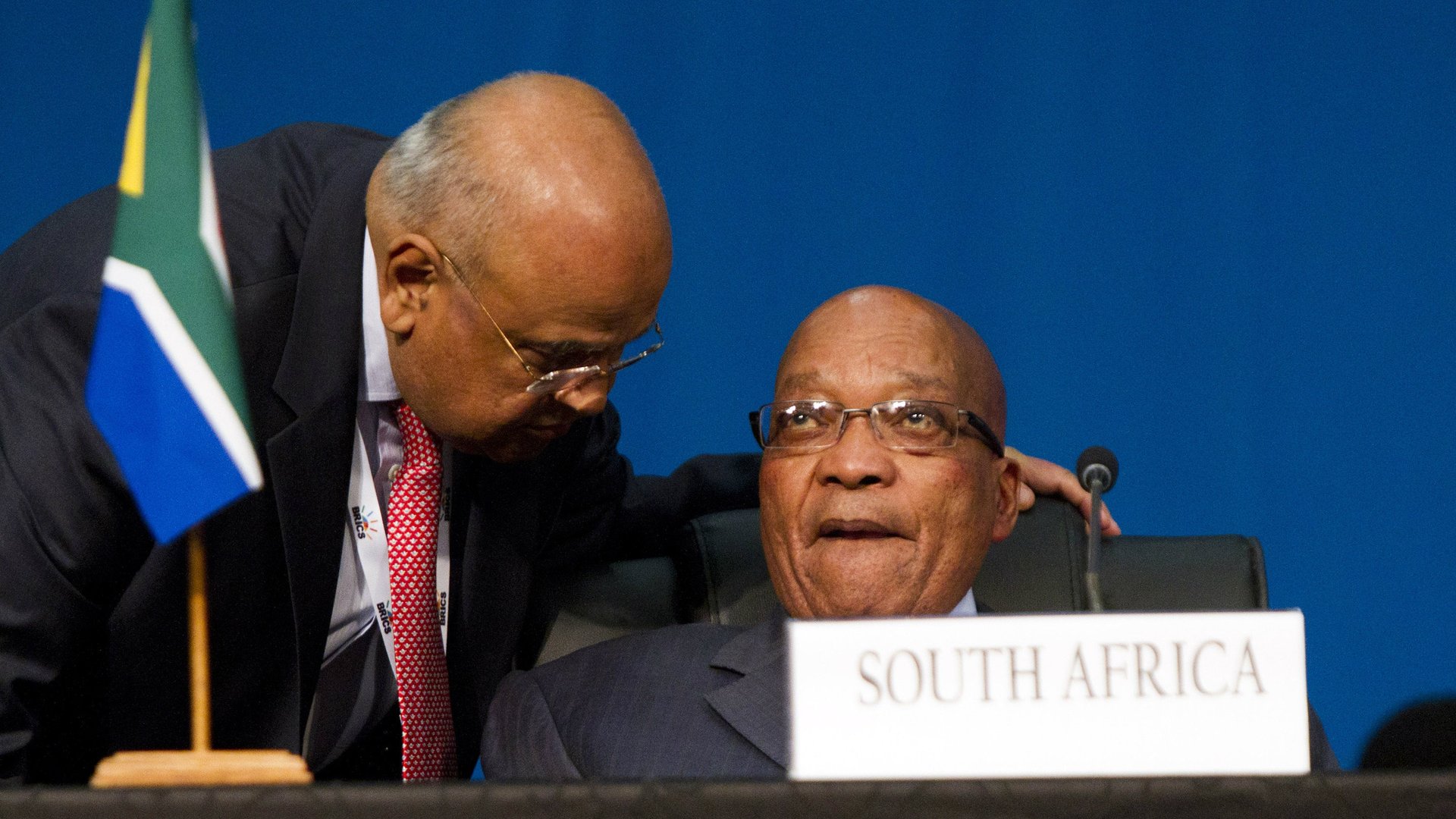Charts show how South Africa’s rand falls every time the president battles his finance minister
Just as it seemed South Africa’s battered currency was regaining strength, the country’s political uncertainty is once again eroding investor confidence.


Just as it seemed South Africa’s battered currency was regaining strength, the country’s political uncertainty is once again eroding investor confidence.
Earlier this month, the rand was hailed as one of the best-performing currencies in the world, stable among emerging market economies and steadily climbing against the dollar. But now, the currency is again giving way to uncertainty as rumors swirl that finance minister Pravin Gordhan is about to be fired. The president summoned Gordhan back to South Africa from an investor roadshow in London on Mar. 27. The rand reacted immediately.
The currency had even more jitters as Gordhan reported to the ruling party’s headquarters, fresh from his flight on Mar. 28. As meetings took place behind closed doors, speculation whirled that Zuma was informing the political top brass that he was finally firing Gordhan after months of animosity between the two. The rand slowed its downward slope later in the day only when Gordhan told reporters he was still the finance minister.
By now, however, these politically driven currency dips should feel familiar to South Africans. After all, it’s been happening for months as the relationship between the president and the finance minister grows more strained, allegedly over the president’s close relationship with the wealthy and controversial Gupta family.
It all started in Dec. 2015 when Zuma fired then finance minister Nhlanhla Nene, replacing him with an unknown member of parliament. It’s believed Nene was moved aside because he was blocking lucrative government contracts for the Gupta family. Zuma said Nene was earmarked for a top position at the development bank started by the BRICS countries, which never materialized.
The rand flailed as the economy was passed to a stranger, reaching record lows against the dollar. Zuma was forced to shuffle finance ministers again, only four days later. He appointed Gordhan, who held the position during the president’s first term, but analysts believed Zuma’s hand was forced by the political elite rather than concerns over the economy.
Back in familiar hands, the currency recovered but the political dealing wasn’t over yet. In February 2016, just days before Gordan was to deliver a crucial budget speech, police investigators questioned him over alleged wrongdoing while he was head of the South African Revenue Service nearly a decade ago. The rand responded accordingly, only calming down when Gordhan was allowed to deliver his budget speech later in March.
The allegations that Gordhan headed a “rogue unit” accused of espionage and corruption within the revenue service would not go away. In May 2016, the rand lost 1.6% of its value over reports that Gordhan faced imminent arrest.
And just three months later, the rand wobbled again when new arrest rumors surfaced.
And yet again, in October, when Gordhan was summoned to a Pretoria court, this time over fraud charges. The charges were linked to Gordhan’s tenure at the revenue service, but it was widely believed that prosecutors and police were pawns in a political game against Gordhan. The charges failed to stick and were dropped by the end of the month. The rand rejoiced.
Zuma has consistently denied that he has a problem with his finance minister, even though he napped during Gordhan’s budget speech last year—which many interpreted as a passive aggressive nodding off. This of course, is speculation, but it’s enough to send South Africa’s rand tanking, again and again.